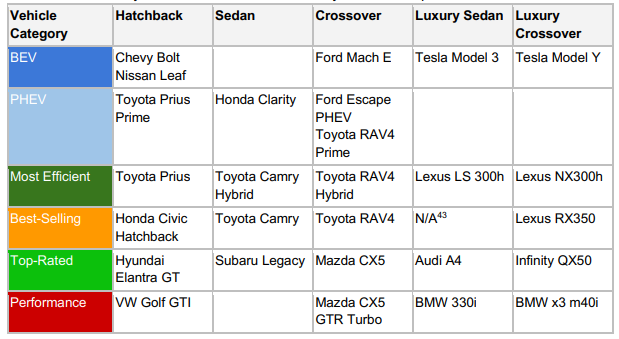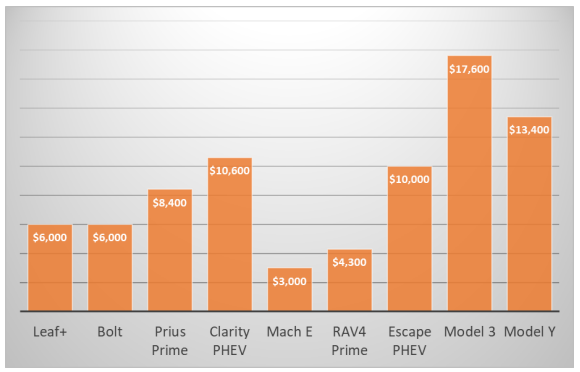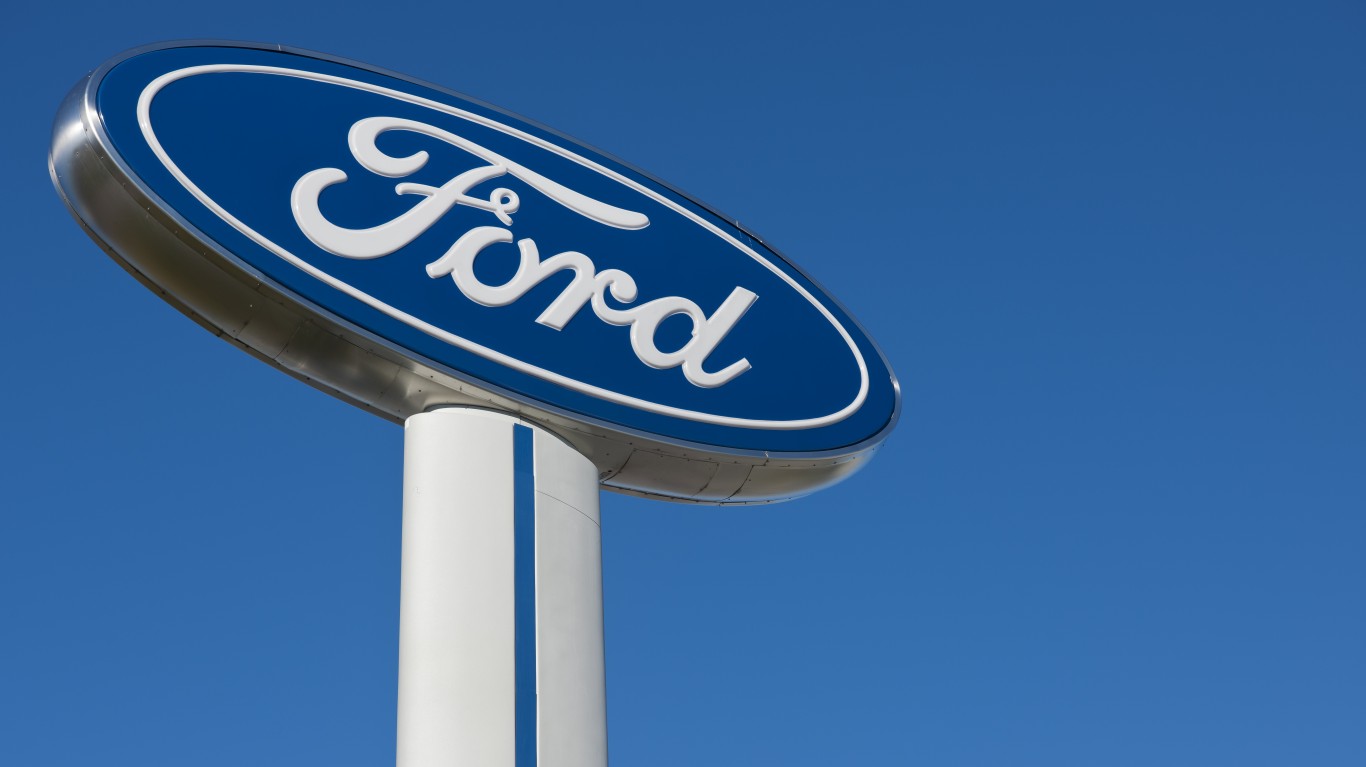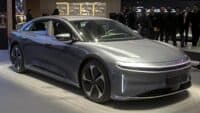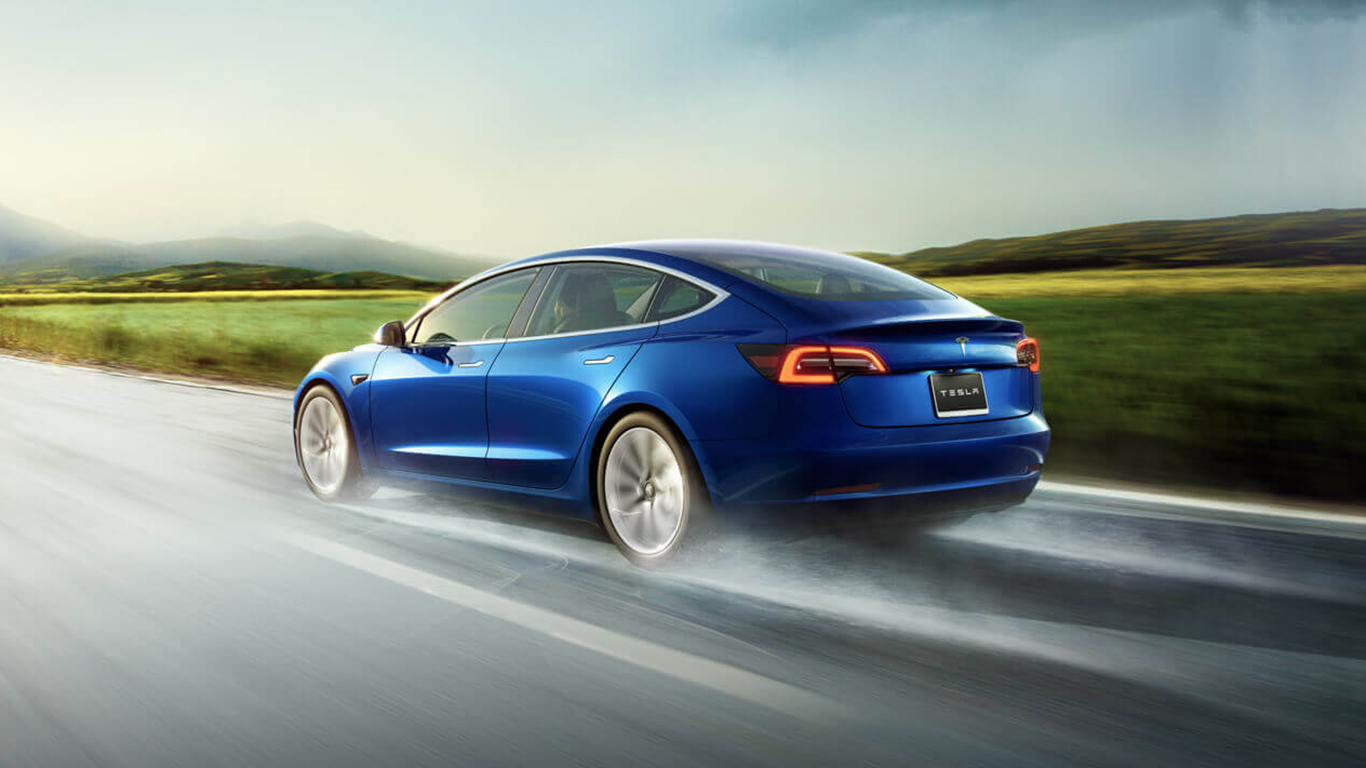
Concluding that the latest models of all-electric vehicles (EVs) “typically cost less to own than similar gas-powered vehicles,” Consumer Reports sees a new automotive marketplace “with serious potential consumer benefits.” The report includes the cost of the vehicle, fuel costs, maintenance and repair costs, depreciation and federal purchase incentives.
Owners of EVs can expect to save 60% on fuel costs, 50% on maintenance and repair costs and break-even on depreciation costs over the first five years of EV ownership.
Using data gathered by ALG, the industry research arm of TrueCar, Consumer Reports noted that lifetime maintenance and repair costs of a battery-electric vehicle (BEV) or a plug-in hybrid EV (PHEV) is half the $9,200 cost of a maintaining a conventional vehicle with an internal combustion engine (ICE).
Fuel costs for BEVs are lowest for those vehicles with the longest range. Using a calculation called the utility factor, BEVs with a range of 300 miles on a single charge have a utility factor of 96%. That is the total miles driven in an EV that is charged only at home and only once a day. For EVs that have a range of just 100 miles on a single charge, the utility factor is 78%.
Vehicle efficiency levels, measured in miles-per-gallon-equivalent (MPGe) for EVs and miles per gallon (MPG) for ICE vehicles are reported for three categories of vehicles. For passenger cars, an EV’s electric efficiency is 120 MPGe while an ICE vehicle’s is 32 MPG. For SUVs and crossovers, the MPGe is 97 compared to 24 MPG for the ICE vehicles, and for pickup trucks, the MPGe is 76 compared to 20 MPG for ICE vehicles.
The fuel cost savings per 15,000 miles of driving may put those numbers in a better perspective. To drive 15,000 mile is an ICE passenger car costs an estimated $1,420 compared with $620 for an EV. An SUV/crossover costs $1,800 for an ICE model and $780 for an EV. Owners of a pickup would pay $2,300 for gasoline to drive 15,000 miles compared to a cost of $990 for an EV owner.
The following chart shows the vehicles Consumer Reports chose to compare and the categories in which the vehicles were rated.
The next chart shows the total lifetime savings of the EVs compared to the best-selling ICE vehicles in the same class
The full Consumer Reports review also contains data on savings to consumers who purchase a used EV. Used cars offer their new owners big value because the first owner “bears the brunt of the steepest period of depreciation” while today’s new cars are expected to remain in good condition for 200,000 miles of driving: “[U]sed-car buyers capture a large fraction of the lifetime utility of a vehicle while paying a relatively low percentage of the new-car price.”
Are You Ahead, or Behind on Retirement? (sponsor)
If you’re one of the over 4 Million Americans set to retire this year, you may want to pay attention.
Finding a financial advisor who puts your interest first can be the difference between a rich retirement and barely getting by, and today it’s easier than ever. SmartAsset’s free tool matches you with up to three fiduciary financial advisors that serve your area in minutes. Each advisor has been carefully vetted, and must act in your best interests. Start your search now.
Don’t waste another minute; get started right here and help your retirement dreams become a retirement reality.
Thank you for reading! Have some feedback for us?
Contact the 24/7 Wall St. editorial team.
